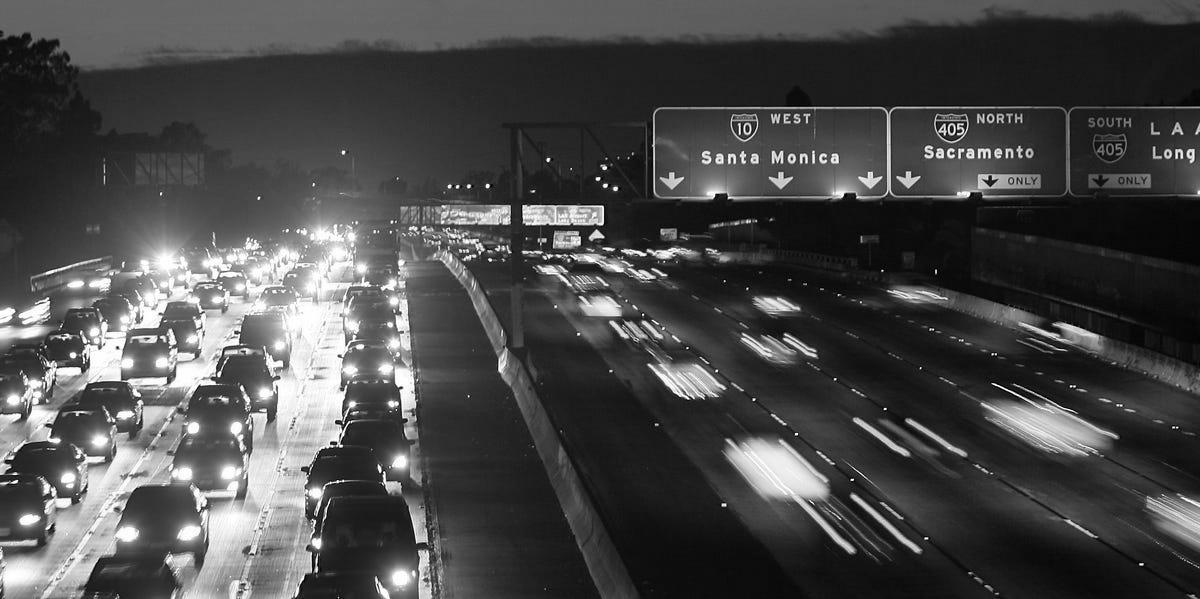California Targets Loud Exhaust with Sound Activated Cameras
Warning: Undefined variable $post_id in /home/webpages/lima-city/booktips/wordpress_de-2022-03-17-33f52d/wp-content/themes/fast-press/single.php on line 26

2022-05-09 23:37:17
#California #Targets #Loud #Exhaust #Sound #Activated #Cameras
GABRIEL BOUYSGetty Photographs
In an effort to scale back noise air pollution, California is about to implement camera-automated exhaust noise enforcement.The pilot program will span from January 2023 to December 2027 and will probably be examined in six different cities throughout the state.Digicam-enforced fines will likely be issued only after subsequent violations of the 95- and 80-decibel ceiling for automobiles and bikes, respectively.Well-known for stringent emissions and modification regulations, the California State Legislature has accepted a five-year automated enforcement pilot program concentrating on loud exhaust from automobiles. If signed by California Governor Gavin Newsom, the camera-enforcement program will begin January 1. The invoice specifies six undisclosed cities all through California to participate on this experimental program.
Before panic units in amongst West Coast enthusiasts, it’s essential to learn the wonderful print of the nuanced Senate invoice. California has lengthy specified the decibel stage at which inventory or modified exhaust programs are deemed too loud—95 decibels for vehicles and 80 for bikes built after 1985—and this hasn’t changed. What has modified, however, is the technique of enforcement.
A "sound-activated enforcement system" means sensors are activated when noise ranges exceed legal limits, and good cameras are used "to obtain a clear photograph of a car license plate," the textual content of Senate Bill 1079 reads. Much like speed-camera thresholds found all over the world, these cameras are triggered by high decibel ranges and can zero in on the offender's plate. It's not immediately clear how these cameras will pinpoint autos in site visitors, or how they are going to differentiate between vehicles and bikes.
Compared to Assembly Invoice 1824, which repealed the fix-it ticket option in favor of a mandated effective, SB 1079 supplies more progressive protections for highway goers. Signage is required to notify motorists earlier than they enter an enforcement zone. First time offenders won't be charged and only subsequent violations will incur fines. Moreover, participating city governments are required to create fee plans, deferment options, and superb waivers for low-income vehicle house owners who demonstrate a temporary or indefinite inability to pay.
Questions stay about this fledgling program and its implementation as it awaits govt approval. While the bill doesn't specify which roads will probably be subject to enforcement, a spokesperson for California State Senator Anthony Portantino confirmed that cities included in this system will probably be liable for deciding which roads to implement using a public input course of. The tremendous quantity stays unclear at this time. Beyond the maintenance and continuation of the program, creating tangible "site visitors calming infrastructure" is the only real use for revenue generated by these fines, state officers say.
NurPhotoGetty Pictures
These cameras will pose a conundrum for producers and lovers alike. Some automobiles and lots of motorcycles, relying on the highway and driving model, will easily exceed the 95 and 80 decibel limits straight from the manufacturing facility. Primarily based on Car and Driver testing, examples embody the 2016 Porsche 911 GT3 RS (108 decibels) and the 2019 Chevrolet Corvette ZR1 and 2019 McLaren 720S Spider, each at 99 decibels.
It will likely be curious to gauge the accuracy of the enforcement gadgets, how manufacturers will continue to change vehicles for California markets, and if the progressive penalty insurance policies turn out to be a blueprint for extra equitable traffic enforcement. In the meantime, California residents might be making the swap over to the high-pitched hum of electric power anyway.
This content is created and maintained by a 3rd celebration, and imported onto this web page to assist users present their email addresses. You might be able to discover extra information about this and similar content at piano.io
Quelle: www.autoweek.com